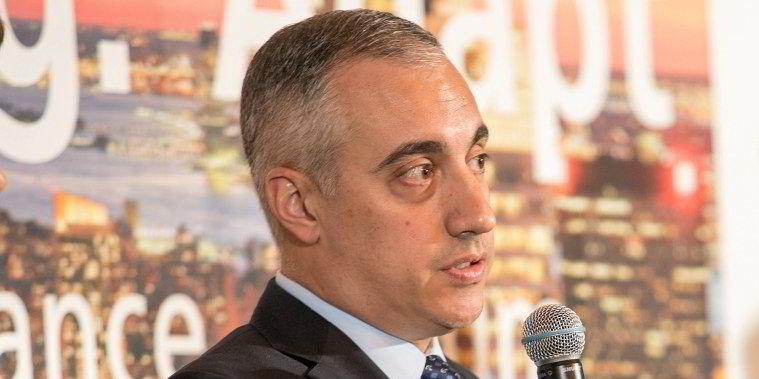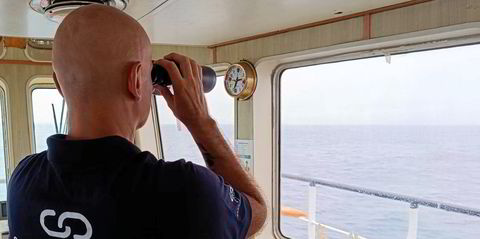Veteran Evercore ISI researcher Jonathan Chappell sounded at least partly enthusiastic in greeting news of a prospective Euronav-Frontline tanker mega-merger this week, saying the combination might “act as a precursor to more real consolidation of the smaller listed peers”.
But then, with the world-weariness of an analyst who’s been around shipping for too long, he immediately added, “a guy can dream”.
Chappell has been writing shipping notes since 2001, then with JP Morgan, and knows only too well that consolidation does not come easily in a fragmented and management-ego driven industry.
With that perspective, he acutely cut to the heart of the potential upside of a combination that would yield a fleet of 69 VLCCs, 57 suezmaxes and 20 aframaxes/LR1s.
It is not about cost synergies of the merger, and it is not about market share or pricing control.
“The biggest benefit from the potential merger would be the creation of an equity with a market value that renders the entity truly investible throughout cycles — something the broader shipping industry has lacked for its entire existence in the US public markets,” Chappell told clients.
Indeed, the combined company would have a market capitalisation approaching $4.8bn today, and this comes with the tanker market in a historic trough.
Chappell dared to dream. Imagine what might happen if the tanker market turned lukewarm or even surged into bull territory? The newest incarnation of Frontline — the surviving company’s name — might even stray into what analysts call a “mid-cap” company.
Not the Premier League
That might not sound overly impressive. But to be clear, to turn the analogy to English football, shipping is aspiring to get a team into the Championship or League One division, not the Premier League.
In American baseball terms, it seeks a promotion to Class AAA or AA of the minor leagues, not Major League Baseball.
Market capitalisation is not just a number. With it comes trading liquidity or turnover. And that allows even the largest investment funds to take a significant stake typical of their practices without the worry that they will become trapped in the bet.
For Chappell, the line between small-cap and mid-cap stocks is somewhere between $7bn and $8bn, at least as related by the investors with whom he deals. That seems attainable for the new Frontline.
Shipping is an industry that still has minnows with share value under $100m.
Its inability to build scale was a factor in Chappell dropping an array of shipping names from his coverage in 2020 as he expanded research into railroads. Later he would add trucking and logistics to his remit.
For a bit of perspective, the tanker names under his research currently have market caps ranging from $180m to $2.8bn.

The railroads range from $67bn to $154bn. A sector known as “less-than-truckload” ranges from $5.4bn to $30bn. Logistics companies vary from $13bn to $17bn.
Probably closest to shipping is a sector called “truckload” — “it’s super highly fragmented and cyclical, kind of like shipping”, said Chappell — is $2.4bn to $7.7bn.
So it is pretty easy to see why even a jaded long-time shipping analyst can get excited about seeing a tanker name approach the scale seen in other industries.
Shipping being shipping, of course, there are obstacles to the Euronav-Frontline tie-up, which as TradeWinds has reported is unusual in that it has been made public with only a term sheet in place, not a contract or “definitive documentation”.
Not the least of these hurdles is opposition from Euronav’s largest shareholder, CMB of Belgium, which wants to transition the tanker owner into a green energy company.
“Of course, nothing can be easy in this sector,” Chappell told clients.
Still, the merger is favoured to happen. And if one needs a reminder that shipping has made progress, look only to another research note penned by perhaps the only analyst who can match Chappell’s longevity in the sector: Magnus Fyhr of HC Wainwright.
“Many institutional investors have long argued that it has been difficult to justify investing in public maritime equities due to the lack of market capitalisation for most companies,” Fyhr wrote.
“Twenty years ago, there were five publicly listed tanker companies in the US … with a combined market cap of $2bn. Twenty years later, there are 39 maritime companies listed in New York with a combined market cap of $40.8bn.”
More ship finance news
Floating regasification specialist Excelerate Energy has raised $384m as it moves forward with its US initial public offering. Click here to read the story.
Investors should shun shipowners who remain indifferent to climate change, and prioritise those who are actively cutting carbon emissions, an influential voice has urged. Click here to read the story.
HC Wainwright & Co’s Magnus Fyhr has added two product tanker owners to his coverage universe. Click here to read the story.





